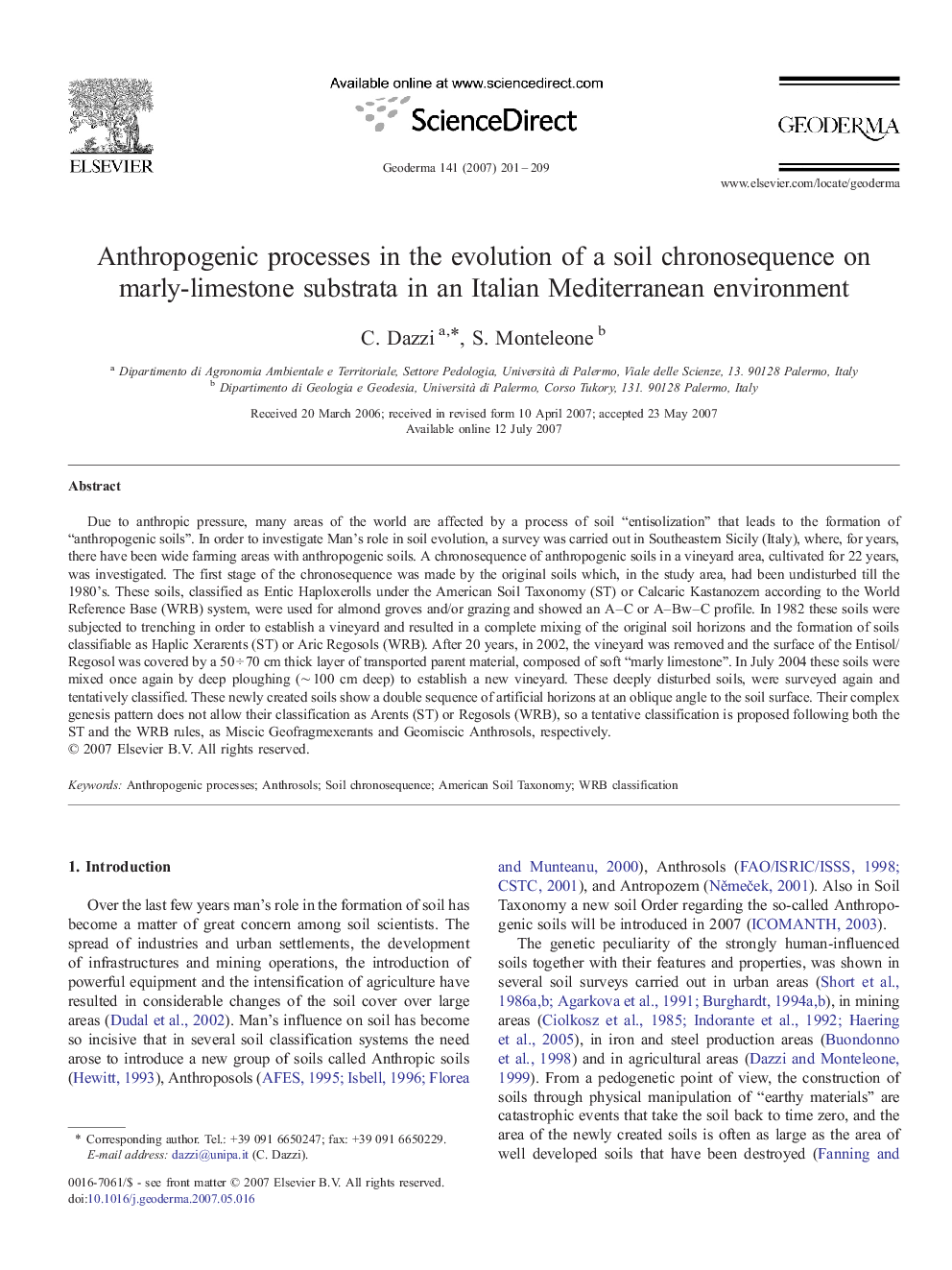| کد مقاله | کد نشریه | سال انتشار | مقاله انگلیسی | نسخه تمام متن |
|---|---|---|---|---|
| 4574913 | 1629550 | 2007 | 9 صفحه PDF | دانلود رایگان |

Due to anthropic pressure, many areas of the world are affected by a process of soil “entisolization” that leads to the formation of “anthropogenic soils”. In order to investigate Man's role in soil evolution, a survey was carried out in Southeastern Sicily (Italy), where, for years, there have been wide farming areas with anthropogenic soils. A chronosequence of anthropogenic soils in a vineyard area, cultivated for 22 years, was investigated. The first stage of the chronosequence was made by the original soils which, in the study area, had been undisturbed till the 1980's. These soils, classified as Entic Haploxerolls under the American Soil Taxonomy (ST) or Calcaric Kastanozem according to the World Reference Base (WRB) system, were used for almond groves and/or grazing and showed an A–C or A–Bw–C profile. In 1982 these soils were subjected to trenching in order to establish a vineyard and resulted in a complete mixing of the original soil horizons and the formation of soils classifiable as Haplic Xerarents (ST) or Aric Regosols (WRB). After 20 years, in 2002, the vineyard was removed and the surface of the Entisol/Regosol was covered by a 50 ÷ 70 cm thick layer of transported parent material, composed of soft “marly limestone”. In July 2004 these soils were mixed once again by deep ploughing (∼ 100 cm deep) to establish a new vineyard. These deeply disturbed soils, were surveyed again and tentatively classified. These newly created soils show a double sequence of artificial horizons at an oblique angle to the soil surface. Their complex genesis pattern does not allow their classification as Arents (ST) or Regosols (WRB), so a tentative classification is proposed following both the ST and the WRB rules, as Miscic Geofragmexerants and Geomiscic Anthrosols, respectively.
Journal: Geoderma - Volume 141, Issues 3–4, 15 October 2007, Pages 201–209